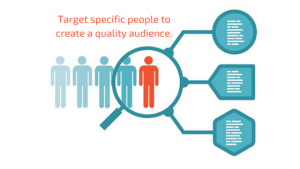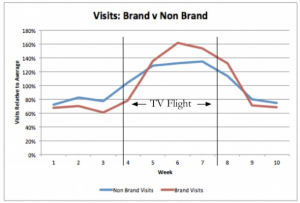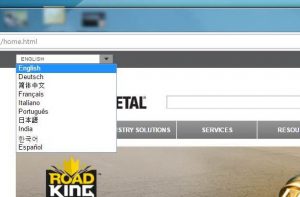
JudaM / Pixabay
As the influencer marketing industry continues to grow and influence in social media expand to micro influencers and even those of the nano level, it’s time to take a fresh look as to how brands can best be leveraging influencer marketing today.
Here are some of thoughts about the influencer marketing industry in general along with tips for leveraging influencers for your company’s advantage.
Influencer Marketing is an extremely powerful tool
No matter what industry you’re in, influencer marketing is a very effective way to get that brand message out to your audience. In fact, influencers might become the most powerful tool in the marketer’s shed for some industries. Why? Well, one reason for this is the fact that traditional marketing is easy to ignore. We’re bombarded by advertising all day, every day. It’s on the radio, the city bus, and the subway cars. Watch television or your favorite streaming service, and commercials are a constant interruption. Log onto the internet, and banner ads are absolutely everywhere. Most of us are sick of traditional advertising, and we need an incentive to listen. On the other hand, when we get something valuable in return for just our attention, it’s very powerful.
Influencer marketing has become mainstream
Influencer marketing has become more mainstream than it was only a couple years ago. That’s because influencers are an excellent way to get your potential audience to listen. Unlike some other modes of advertising, they’re also easy to scale up or down as audiences change. Do it right, and you get a wonderful return on your investment. Look at it this way: unlike advertising, which works with all industries that can pay, influencers work within a specific industry. Advertising isn’t their specific way of getting paid in most cases.
Perhaps more importantly, influencers ideally are people who have worked with your product, and sometimes competing products. They can tell you a lot about what works and what doesn’t. And when they tell their audience that your product is awesome, they listen. People often do a good bit of market research before making purchases. Much of the value with influencer marketing is that it facilitates this type of research. If I need a product that will work in certain circumstances or under specific conditions, the “package insert” or company-generated literature won’t always tell me what I need to know. And if there are competing products that “will do,” I need a way to choose between them.
Choose your influencers carefully
Like so many things in life, influencer marketing isn’t a “one size fits all” strategy. Part of the reason for this is that influencers have different sizes and types of audiences, even within the same industry.
Take the beauty industry, for example. Some customers like to shop at CVS, while others won’t touch anything that isn’t sold at Nordstrom, and everything in between. People buying cars generally have a price range and specifications in mind: one family might need a reliable car that costs under $ 25,000 while their neighbors won’t even think of buying anything under $ 40,000. Influencers are very useful in these situations, but you need someone who is an expert on drugstore makeup, or luxury makeup. The same thing goes with car purchases: you need someone whose audience generally shops for cars in the target price range.
Likewise, there are influencers with different sizes of audience, and who may cost more or less to work with. You might also need to consider the personal brand of your influencer, and whether or not it’s a match with your corporate values. Think of it this way: you need an influencer to be cost effective, but that definition can be different depending on your company and goals. Small-time influencers are great for boutique brands, for instance, but they can cost more per engagement. Big names are really expensive, and possibly unaffordable for smaller brands. Often, the influencer with mid-sized audiences are a good value for money. Finally, make sure that an influencer isn’t going to embarrass you. This happens occasionally, and it’s really backfired on some brands. Short of that, you might send the wrong message with influencers who don’t match your target audience.
For best results, treat them right
You wouldn’t abuse your employees, would you? After all, you want them to not leave for a competitor, and you need that referral now and then, right? It’s a similar principle with influencers. They don’t have to work with you, and if you don’t treat them right, chances are you’re going to have problems recruiting in the future.
It’s important to have standards but don’t micromanage. Let them be creative, while maintaining some say over any sponsored content. If you need to make changes, do so but make sure that your influencer feels valued in the process.
Be careful with influencer marketplaces
Influencer marketplaces can take more than one form. Some of them are just platforms where influencers can advertise their services by listing themselves under various categories and giving a price. Others are types of influencer marketing tools to help you find appropriate influencers for your needs.
While there’s nothing inherently wrong with these, they serve to limit influencers through their categories. It also makes it harder to find the “right” influencer, because you have to search by predetermined categories. Use the wrong influencer, and you aren’t going to get a good ROI.
Consider influencer track records and cost structures
By track records, we mean metrics of effectiveness. There’s a lot of competition out there, and some influencers are naturally better at selling things than others. So while someone might have a big following, they might be poor at getting brand messages out. On the other hand, another influencer might have a smaller audience but be very effective with what they have.
At the same time, don’t be a cheapskate. Influencers have to make a living like anyone else, and their time is valuable. They can’t just “invent” extra time that doesn’t already exist somewhere. In the end, you need to pay the right amount for the right influencer. This isn’t a commodity.
Do you have any other tips for working with influencers? Let us know in the comments below.
Digital & Social Articles on Business 2 Community
(14)






